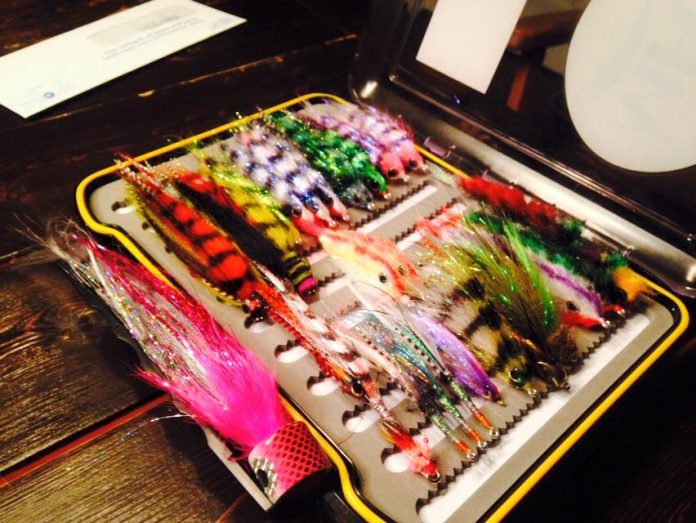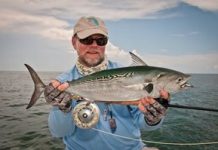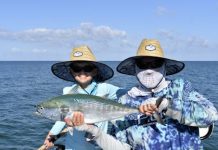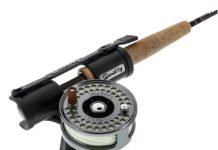
In an earlier article I showed a fly pattern that represented both a shrimp and a baitfish. A few of the readers were concerned that the pattern was not specific enough to fool cagey fish. They felt that their percentage of takes would improve if the fly was a better representation of either a shrimp or a minnow.
I have always felt that there are many important issues that will trigger a strike besides an artificial that represents the chosen bait down to the last detail. Observing others fishing, in addition to watching myself has taught me a few lessons that I’d like to share with you.
We will assume that we are fishing over fish. Location of our targeted species will not be the subject here, but rather how and why fish will refuse the “perfect” fly.
Much of my fishing in warm weather takes place around lighted areas at night. The fish, mostly Trout and Snook, are usually visible. Approaching the lighted area, fish can be seen on the surface. If they are all lined up facing into the tide, your chances are already very good. Hearing a distinct “Pop” on the surface as Snook feed tells you that you’ve picked the right time. Dragging out an anchor with a chain and banging it in the boat before throwing it over the side, with a big splash, close to the fish, is something I see too often. Bumping your boat into an adjacent structure is equally as bad. Having the wake from your outboard disrupt the area is never helpful. Dropping soda cans and other objects on the deck is a disaster. Tying up too close to the light is another big mistake. Any of these errors has ruined your chances before you begin.
Instead, approach slowly and take note the direction the fish are facing. Cut your engine well in advance of where you want the boat positioned before your first cast. I rarely anchor, choosing instead to use a bow mounted electric to position the boat. Sometime I leave the electric down in the water, using it to move from one dock to the next. Not using the outboard at all has its advantages. Your first position should allow an accurate cast to be made into your side of the dark area adjacent to the lighted place. A little down current from where you want to cast is preferred. The fish are expecting bait to drift with the current into their feeding zone requiring little effort to take an offering.
With the boat properly positioned, strip enough line to make your first cast accurately. Cast well ahead of the fish, and using your line hand to control distance, trap the line between your thumb and first finger to stop the cast. The line should be aimed above the water, almost at eye level. As the line straightens, the fly will delicately fall and make a quiet entrance into the water. Your line hand is ready to instantly respond if a strike occurs, or you can begin stripping if needed. This gives you complete control over the situation. Contrast this to a sequence that I frequently see.
After positioning the boat, a client begins to false cast to get enough line out to make his cast. While false casting, the line rips the water in front of him, short of the fish, but close enough to send them scurrying. If this doesn’t happen, the first cast is a little short of the fish, and instead of fishing the cast, he will begin to pick line off of the water and rip the surface, having the same result. Let’s say the cast is long enough, but lands on the back of a fish, and it spooks, scaring the others. Slapping the fly on the water close to the fish is another catastrophe. These happen to everyone. Try to be stealthy; a few more seconds to make the necessary corrections will increase your chances for success. If your casting needs some improvement, spend some time in your back yard to work on your technique. A good casting instructor can help you tremendously.
The fish swimming in front of you will be your best judges. Give the flies that you so meticulously tied the best chance of success by properly setting up your presentation. Success will increase with a little careful preparation.
Capt. Pat Damico
St. Pete Beach
- Captain’s Corner:Pat Damico - June 25, 2019
- Flat water makes seeing tarpon easier - May 17, 2017
- Warm rivers holding plenty of targets for fly fishermen - February 16, 2017











